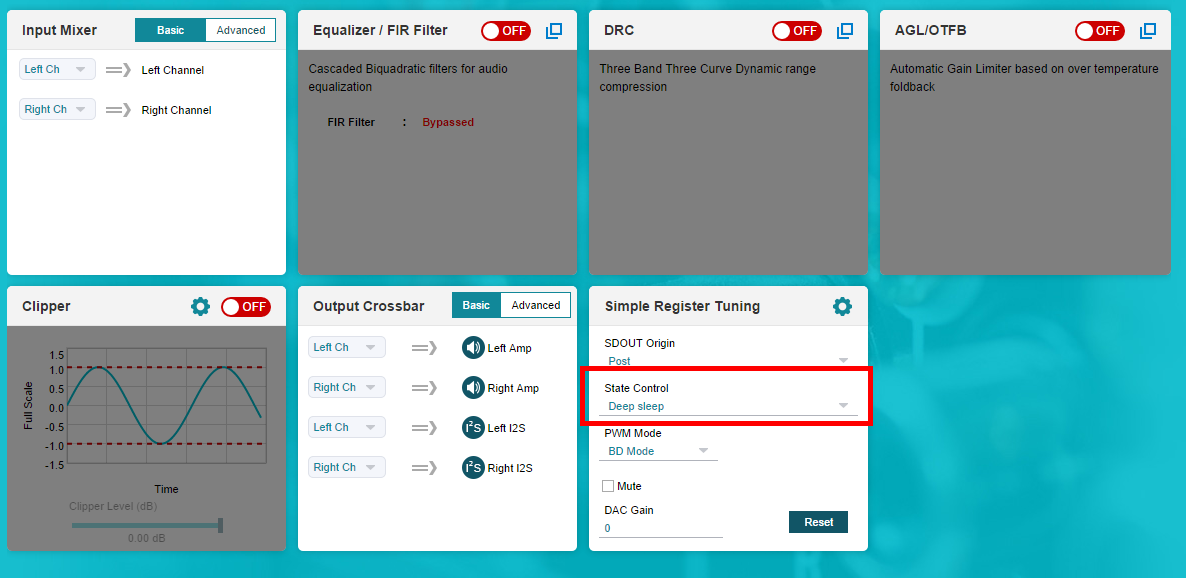Other Parts Discussed in Thread: TAS5805, CC1310
Hi.
I am using TAS5805MEVM to play audio through SPI from a CC1310 MCU.
My setup is:
- Device B (0x5A I2C address) in Mono 1.0 PBTL mode using left channel with AGL/OTFB activated
- 4ohm 40W speaker
- Process Flow 3-Band DRC & FIR (1.0 48k) with manual fs (44.1kHz) and BCK ratio (32·fs) selection
- Hybrid Mode with PVDD=22V
- PWM Switching Frequency=384k and Class D Loop Bandwidth=80kHz
- I2S clocks normally stopped. Clocks are ON only when playing audio
When I make TAS5805M enter in Deed Sleep mode I only see a 7mA reduction: from 64mA in Play Mode (with no audio, nor clocks) to 57mA in Deep Sleep Mode. The current is measured from the 22V PVDD supply.
From the 7.5 Electrical Characteristics of the TAS5805M datasheet I expected a reduction in order of 18mA:
a) Icc on DVDD (3.3V): Play Mode (18mA) - Deep Sleep Mode (0.75mA) = 17mA approx -> From the PVDD (22V): 2mA approx
b) Icc on PVDD (13.5V): Play Mode (16.5mA) - Deep Sleep Mode (120uA) = 16mA approx -> From the PVDD (22V): more than 16mA
Why this difference?
Moreover, I don't see any reduction when I make TAS5805M enter in Hiz or Sleep Modes: current from the 22V PVDD supply is always 64mA as in Play Mode (with no audio, nor clocks)
Why this unexpected behaviour?


